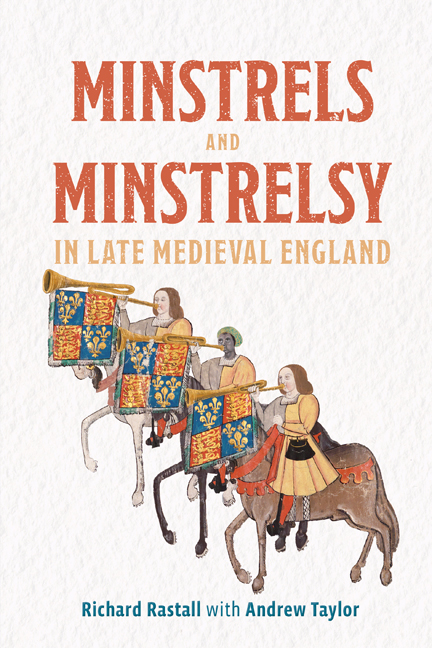Book contents
- Frontmatter
- Dedication
- Contents
- List of illustrations
- List of music examples
- List of abbreviations
- A note on references
- A note on money
- A note on dates
- Preface
- Acknowledgments
- Part I Minstrels and Minstrelsy in the Elite Households
- Part II Urban Minstrelsy
- Part III On the Road
- Part IV Minstrel Performance
- Envoi
- Bibliography
- Index
3 - Recruitment, training and retirement
Published online by Cambridge University Press: 09 January 2024
- Frontmatter
- Dedication
- Contents
- List of illustrations
- List of music examples
- List of abbreviations
- A note on references
- A note on money
- A note on dates
- Preface
- Acknowledgments
- Part I Minstrels and Minstrelsy in the Elite Households
- Part II Urban Minstrelsy
- Part III On the Road
- Part IV Minstrel Performance
- Envoi
- Bibliography
- Index
Summary
Recruitment
A minstrel might obtain a position in the king's household, or in any elite household, in various ways. Most of these involve transfer from one household to another, or from one department to another within a household, but there are examples of transfer from civic to domestic employment. There are hints, too, of independent minstrels gaining employment in royal service, although this is unprovable. These all involve established professional minstrels obtaining promotion. The question arises as to how a young minstrel could get a foot on the employment ladder, and therefore how boys were trained for service as minstrels.
Transfers between households
Perhaps the most obvious way by which a minstrel could gain permanent employment in the king's household was from a dependent household. It was not unusual for vacancies in the king's household to be filled by minstrels from the household of the queen or the Prince of Wales,1 though we must remember that the minstrel was, technically, already an employee of the king. Even when a household was no longer strictly dependent, transfer from there to the king's household was probably an obvious possibility. Edward IV found a place for William Barley, formerly a minstrel of his brother the Duke of Clarence, who apparently joined Edward's minstrels on Clarence's death in 1478. This was presumably a matter of expediency – even of charity – although one assumes that Barley was a highly competent minstrel. A case of transfer in the opposite direction, however, was clearly a matter of career promotion, when Edward III's trumpeter John Buckingham was promoted to be chief minstrel to John of Gaunt in 1379/80.
John of Gaunt, Duke of Lancaster, and George Duke of Clarence were close relatives of the king (son of Edward III and brother of Edward IV, respectively), so that their minstrels were no doubt well known in the households to which they transferred. A minstrel in the household of a non-royal magnate could become known to the king through his performance when the magnate was a guest of the king, or sometimes the host.
- Type
- Chapter
- Information
- Minstrels and Minstrelsy in Late Medieval England , pp. 49 - 72Publisher: Boydell & BrewerPrint publication year: 2023

